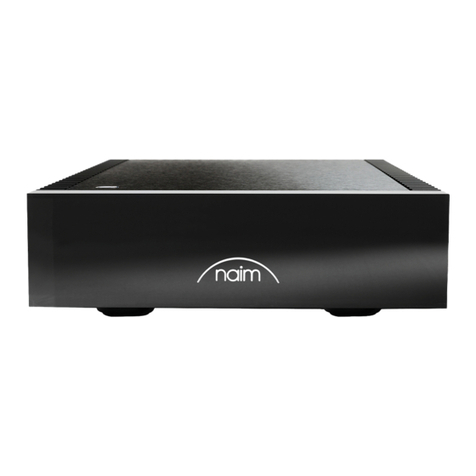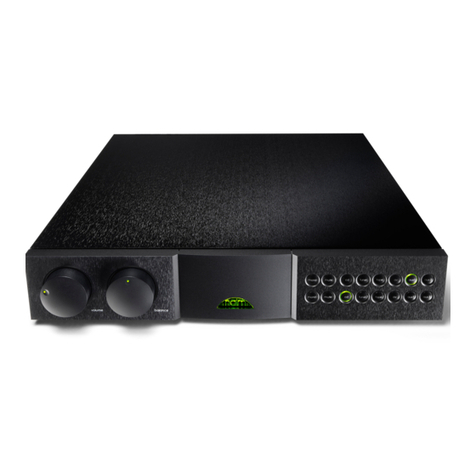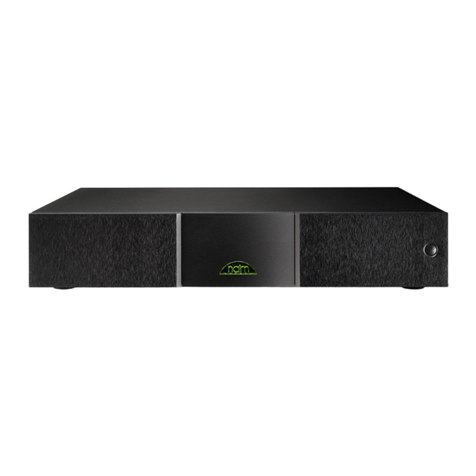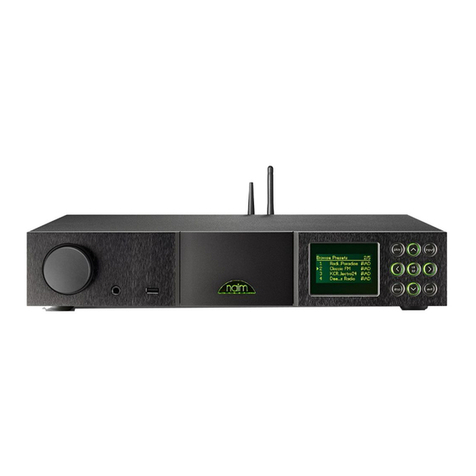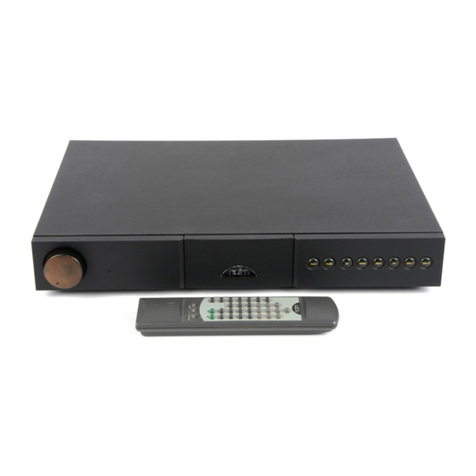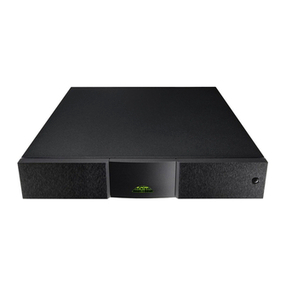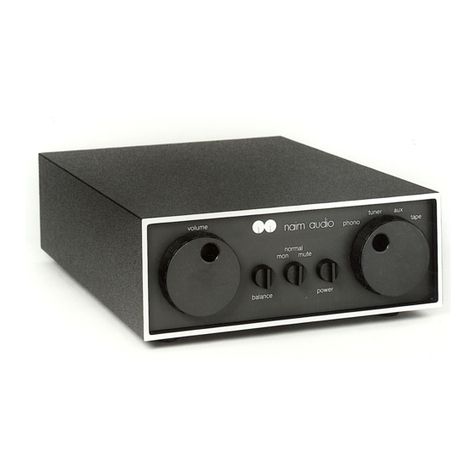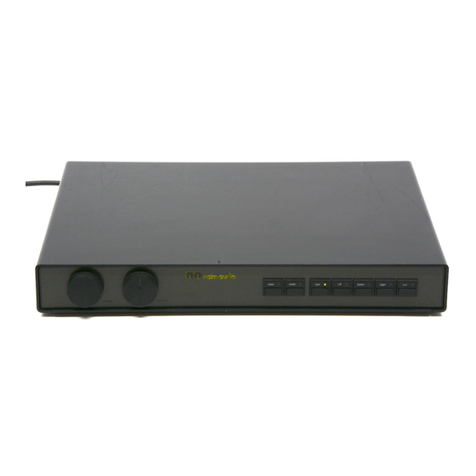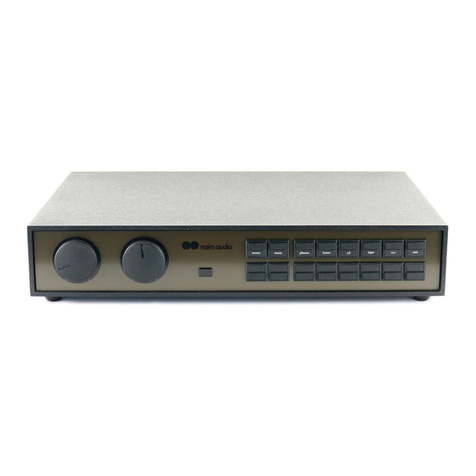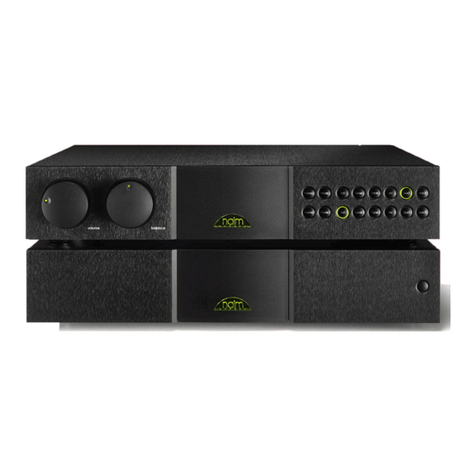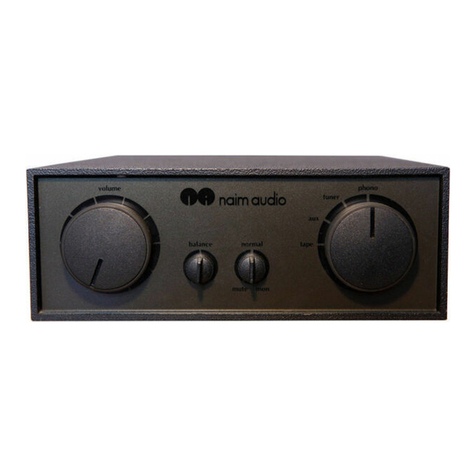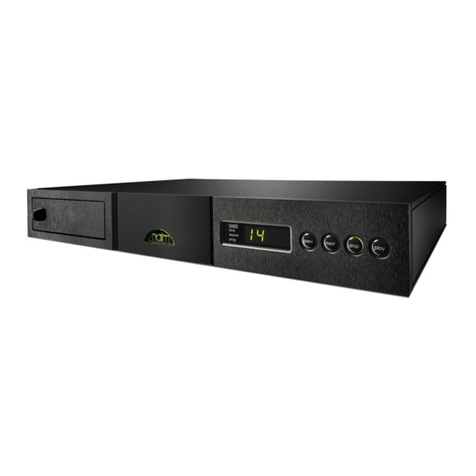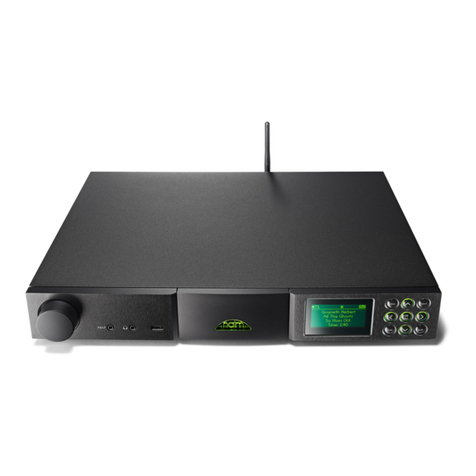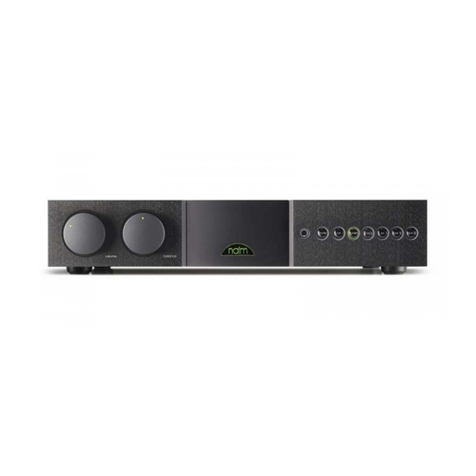E1
1 Connections
It is important for both safety and performance that
the standard cables supplied are not modified.
1.1 Interconnect Cables
If options are available with your equipment and installation,
DIN interconnect sockets should be used in preference to RCA
Phono sockets. One end of each Naim interconnect cable is
marked with a band to establish its correct orientation. The band
denotes the end that connects to the signal source. Naim Hi-Line
interconnect cables will provide the best results.
Interconnect plugs and sockets should be kept clean and free
from corrosion. The easiest way to clean them is to switch off
the equipment, pull the plugs out of their sockets, and push
them back in again. Contact cleaners and “enhancers” should not
be used as the film they deposit may degrade the sound.
1.2 Loudspeaker Cables
Loudspeaker cables are vitally important. They should each be
at least 3.5 metres long and of equal length. The recommended
maximum is normally 20 metres although longer cables may be
viable with some Naim amplifiers.
Some Naim amplifiers are designed only to work with Naim
loudspeaker cable and using alternatives may degrade the
performance or even damage the amplifier. Other Naim
amplifiers can be used with any high quality loudspeaker cable
although we recommend that Naim loudspeaker cable is used.
Naim loudspeaker cable is directional and should be oriented so
that the printed arrow points towards the speakers. The Naim
loudspeaker connectors supplied are designed to comply with
European safety legislation and must be used.
Contact your local retailer or distributor for further advice on
loudspeaker cables and connectors.
2 Mains Power
Where fused plugs are used 13 amp fuses should be
fitted. Fuses of a lower rating will fail after a period of
use. Do not wire voltage dependent resistors or noise
suppressors into mains plugs. They degrade the mains
supply and the sound.
2.1 Mains Plug Wiring
In some territories a mains plug may need to be fitted to the
supplied mains lead. As the colours of the wires in the mains
lead may not correspond with the coloured markings identifying
the terminals in the plug proceed as follows:
The wire coloured GREEN-AND-YELLOW must be connected to
the terminal in the plug marked by the letter Eor by the safety
earth symbol or coloured GREEN or GREEN and YELLOW.
The wire coloured BLUE must be connected to the terminal in
the plug marked with the letter Nor coloured BLACK.
The wire coloured BROWN must be connected to the terminal in
the plug marked with the letter Lor coloured RED.
2.2 Equipment Fuses
Mains powered Naim Audio equipment is fitted with a mains
fuse on the rear panel adjacent to the mains input socket.
Replace it if necessary only with the spare fuse supplied or with
an identical fuse. Repeated failure of the fuse points to a fault
that should be investigated by your retailer or Naim itself.
2.3 Non-rewirable Mains Plugs
If a non-rewirable plug is cut from a mains lead (for whatever
purpose) the plug MUST be disposed of in a way to render it
totally useless. Considerable shock hazard exists if the cut-off
plug is inserted into a mains outlet.
2.4 Mains Circuits and Cables
A hi-fi system usually shares a mains circuit with other
household equipment some of which can cause distortion of the
mains waveform. This distortion can in turn lead to mechanical
hum from mains transformers. Some Naim transformers are
large in size, making them relatively sensitive to such distortion,
and it may be necessary to take account of transformer hum
when siting your equipment.
Transformer hum is not transmitted through the speakers and
has no effect on the performance of the system; however, a
separate mains circuit may reduce it. Such a circuit (ideally
with a 30 or 45 Amp rating) will also generally improve system
performance. Advice on the installation of a separate mains
circuit should be sought from a qualified electrician.
Use only the mains leads and plugs supplied or the Naim
PowerLine mains cable.
Introduction
Naim Audio products are conceived with performance as the top priority. Careful
installation will help ensure that their full potential is achieved. This manual covers
all power amplifiers. It begins with some general installation notes. Product specific
information begins in Section 4.
Note: Please read
the Statutory Safety
Warnings found at the
end of this manual.

